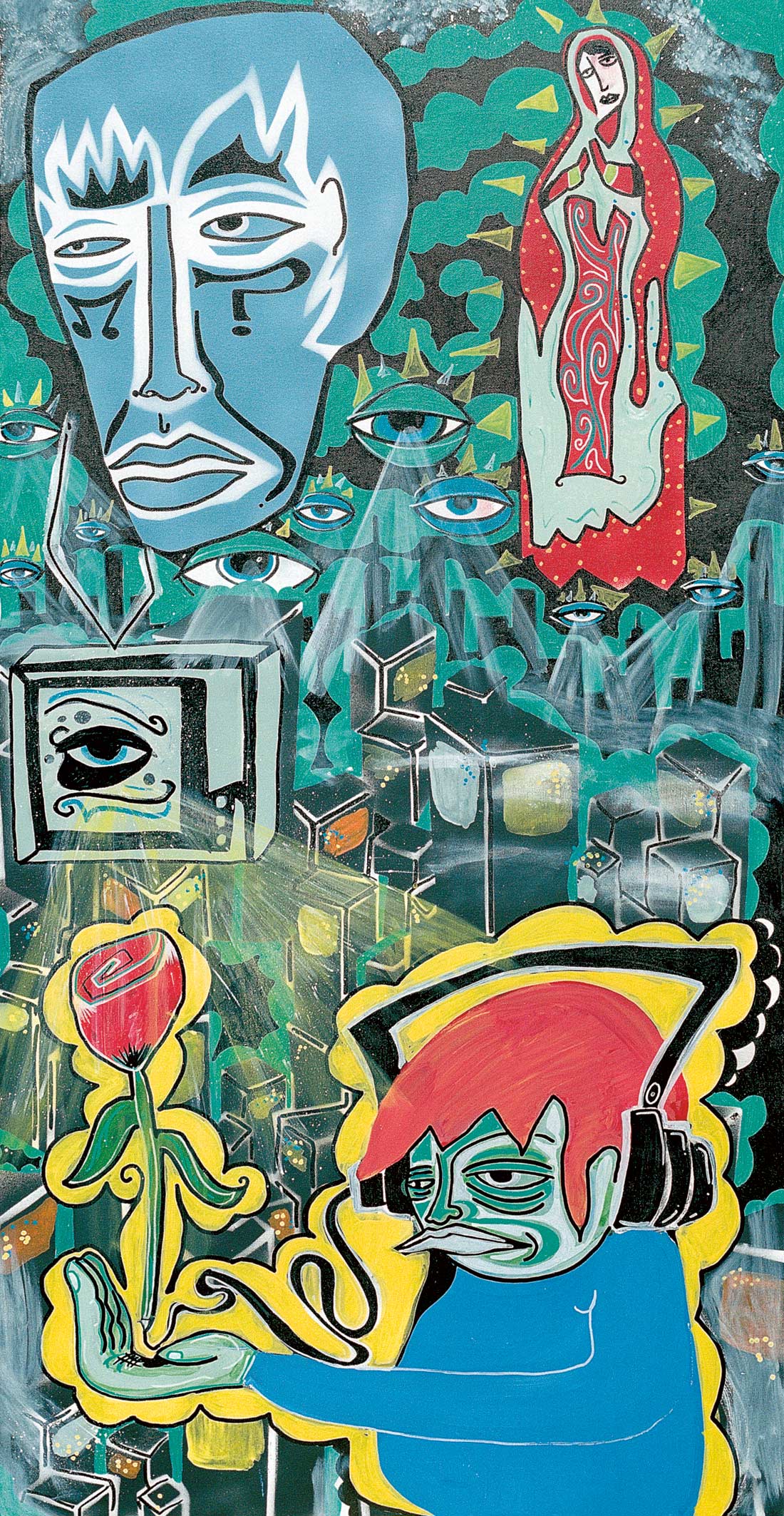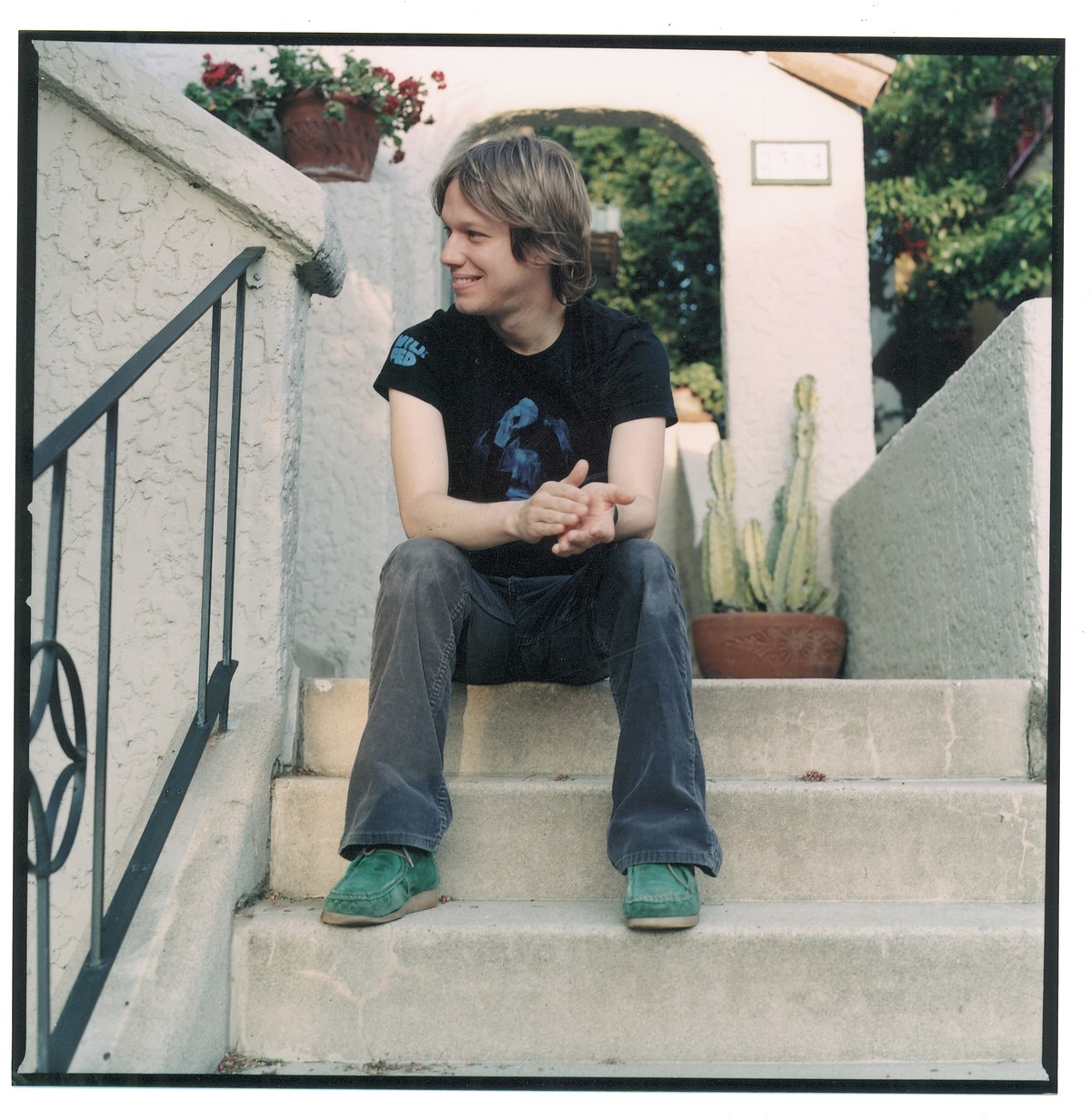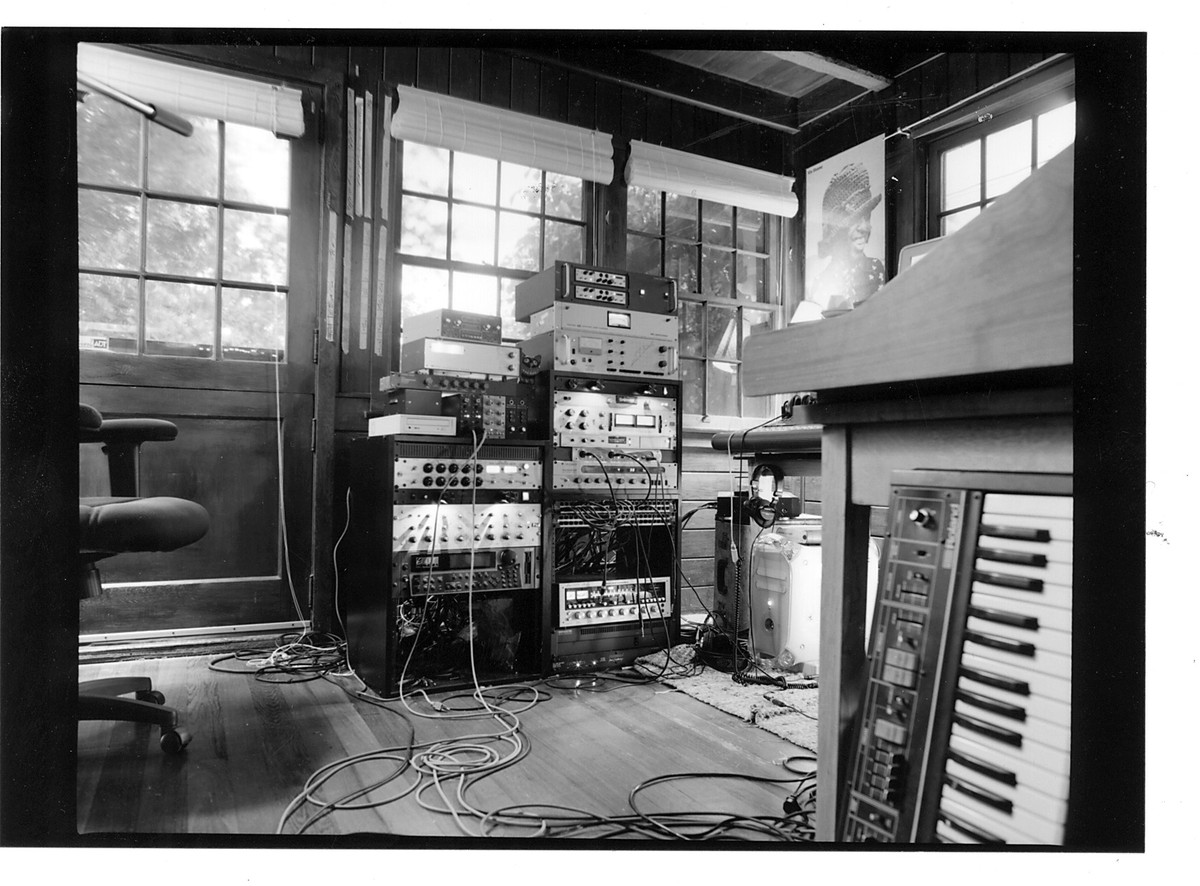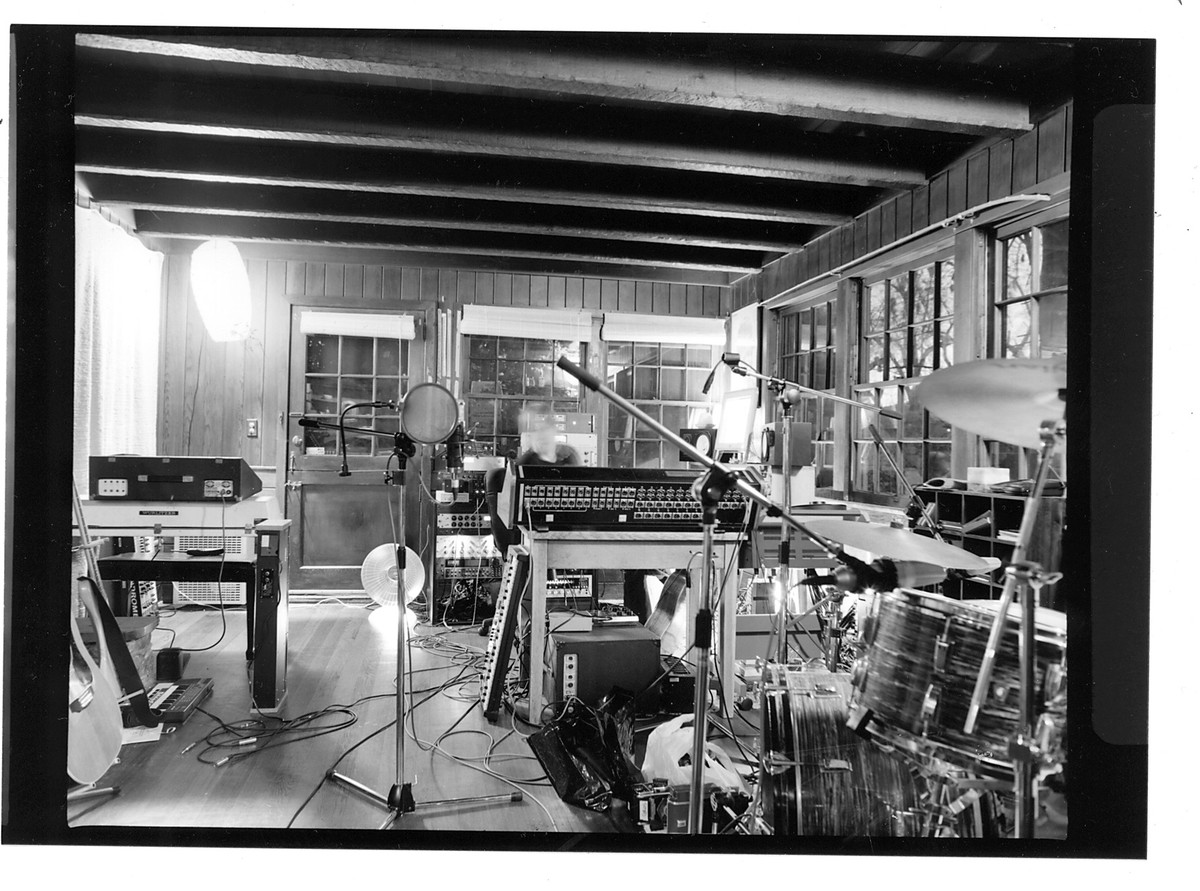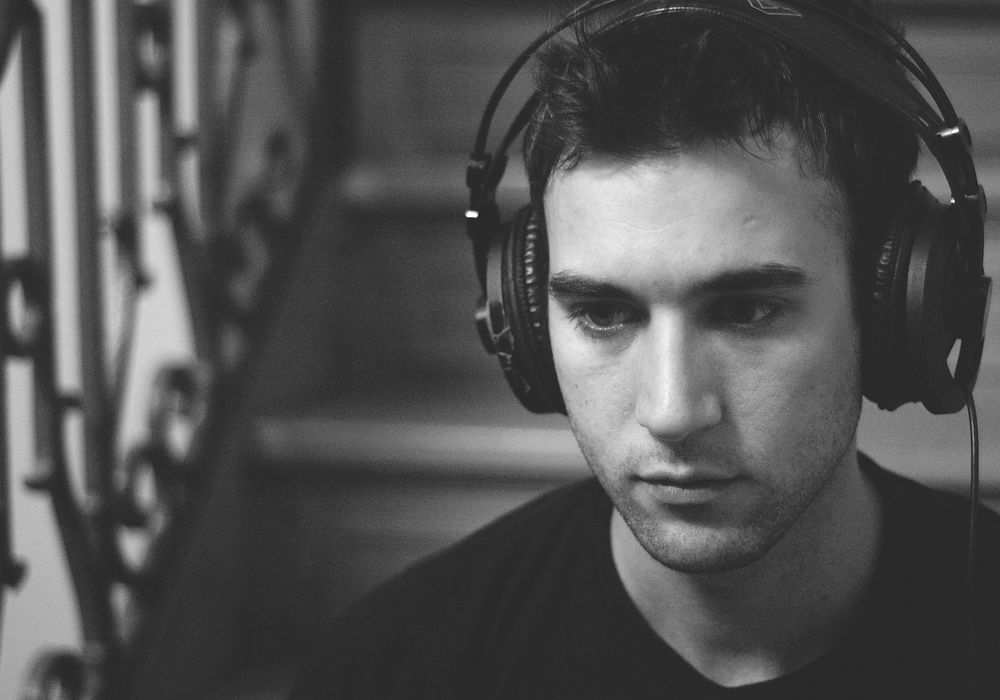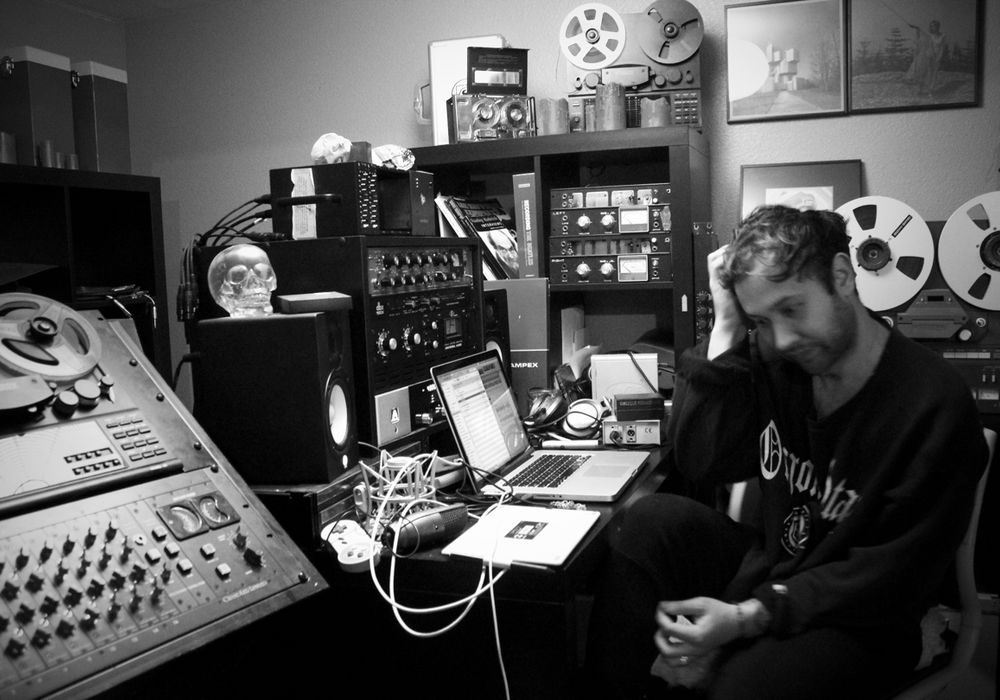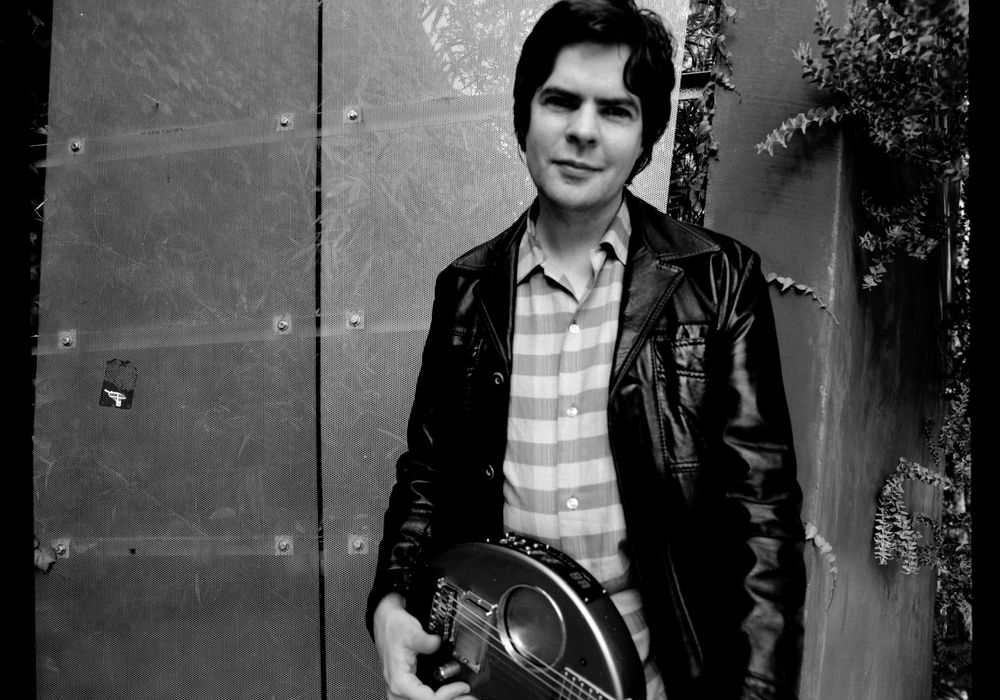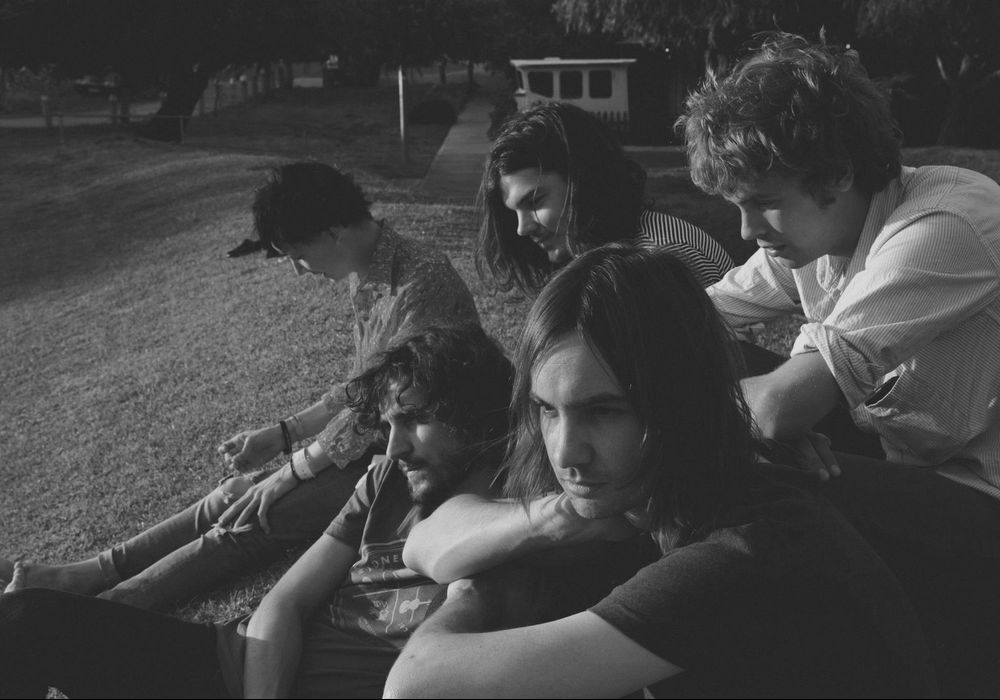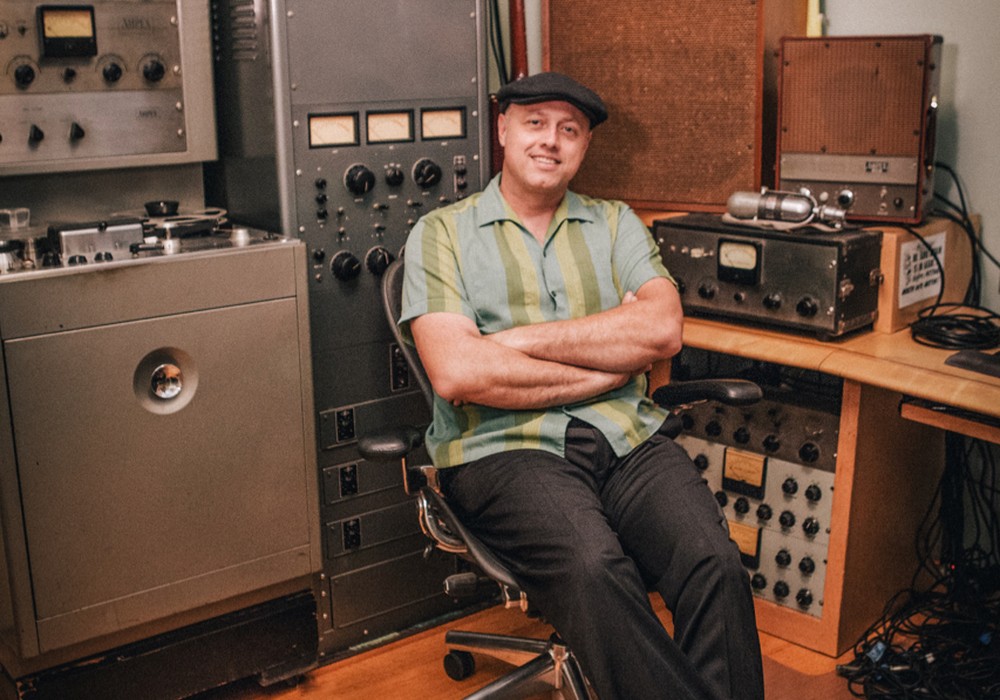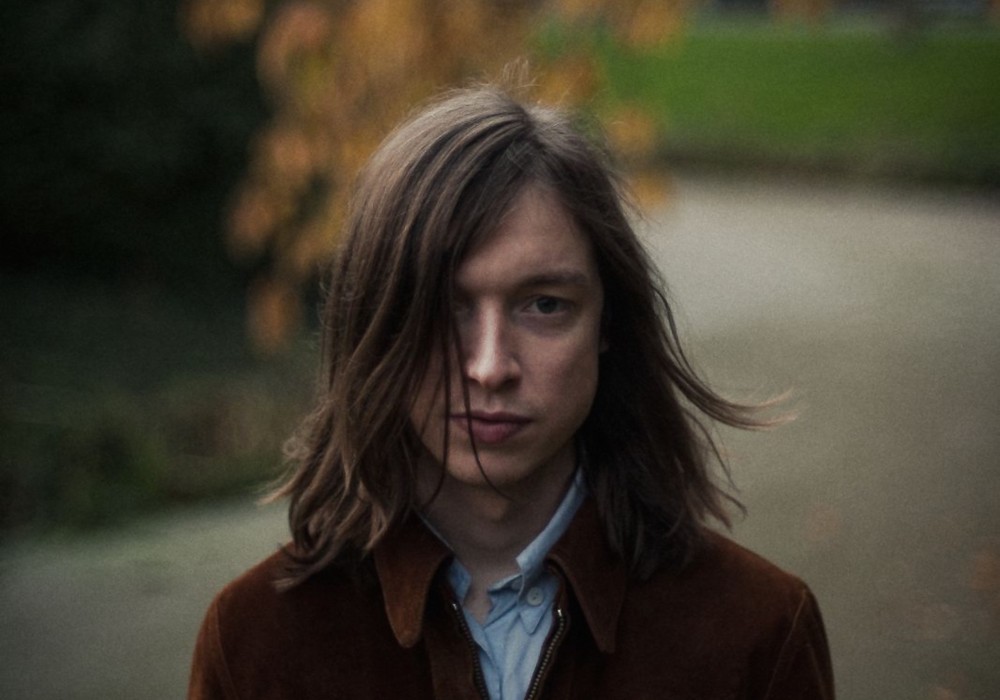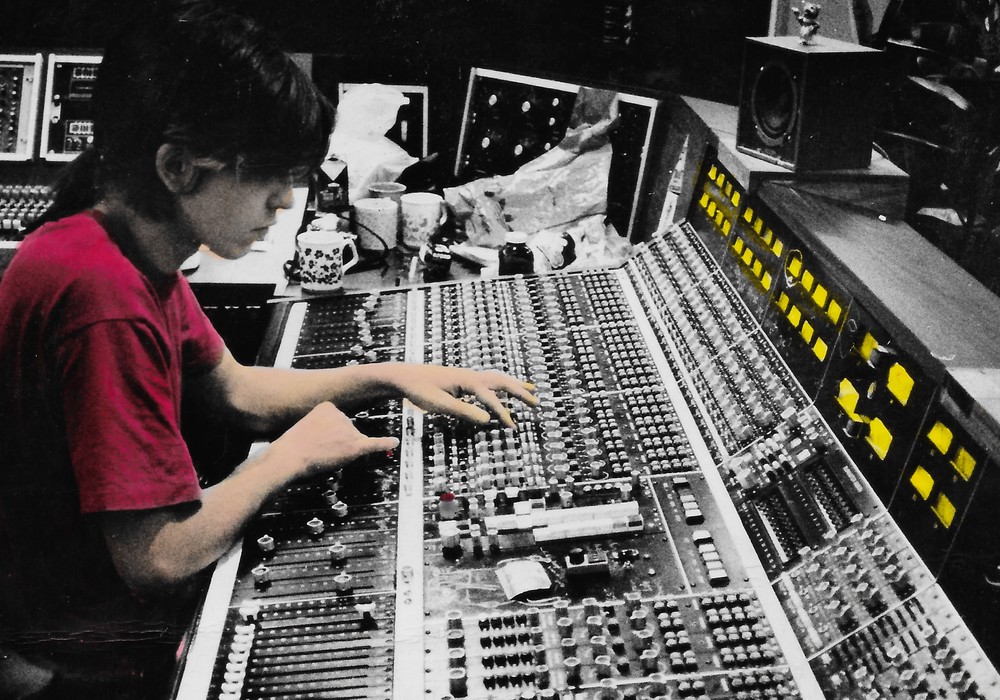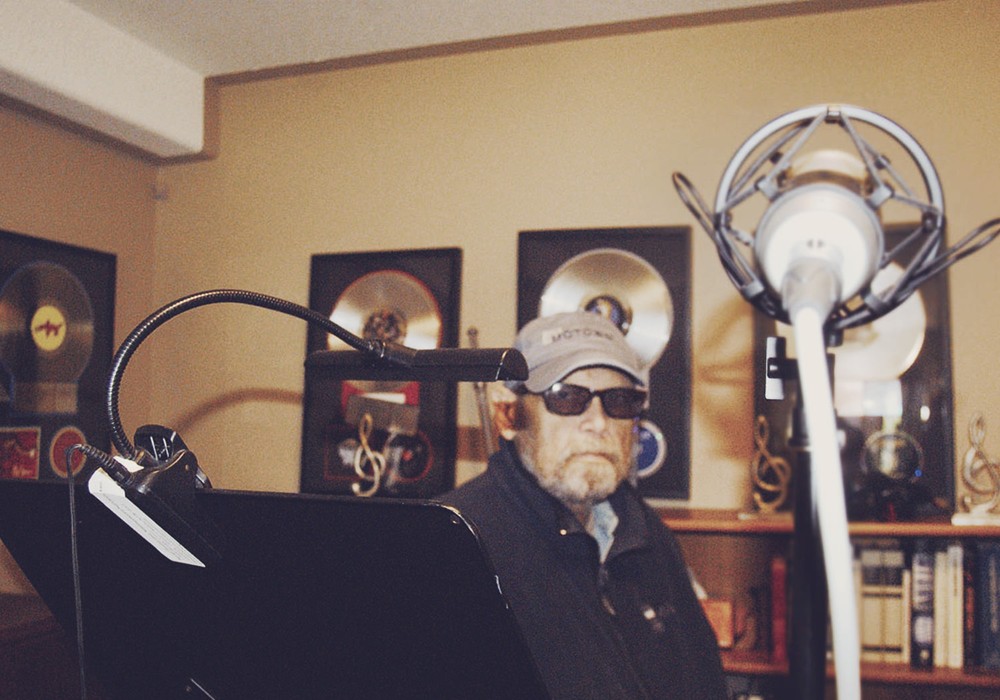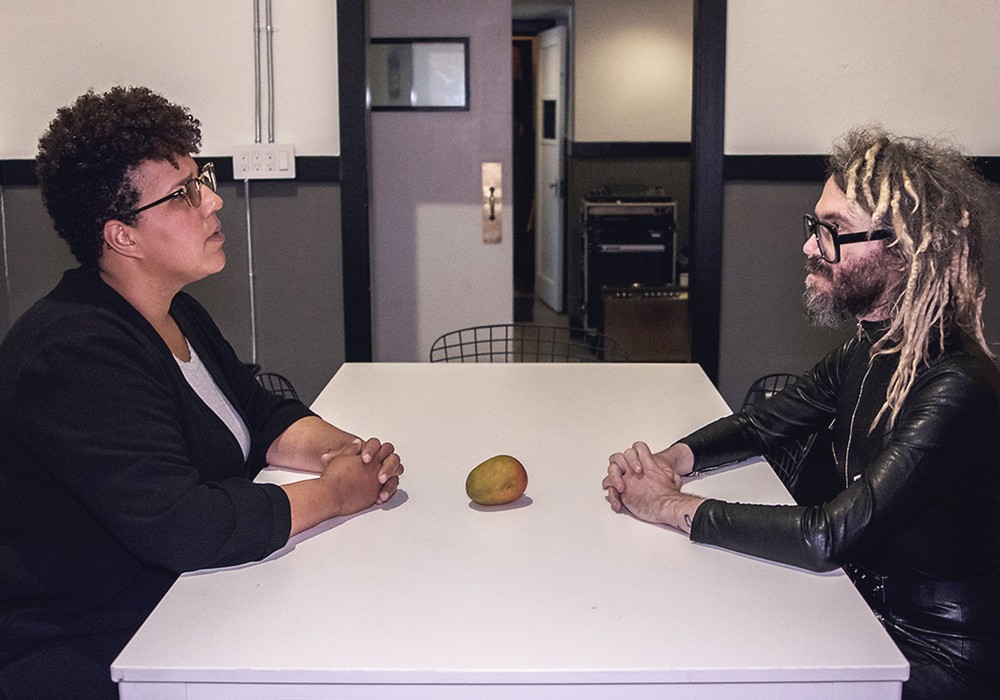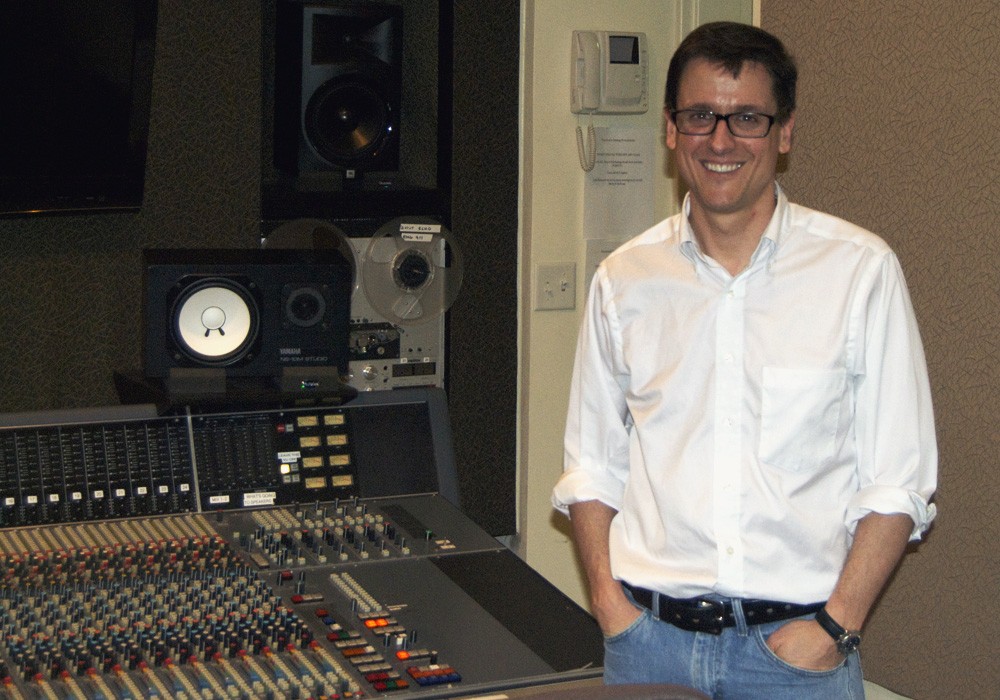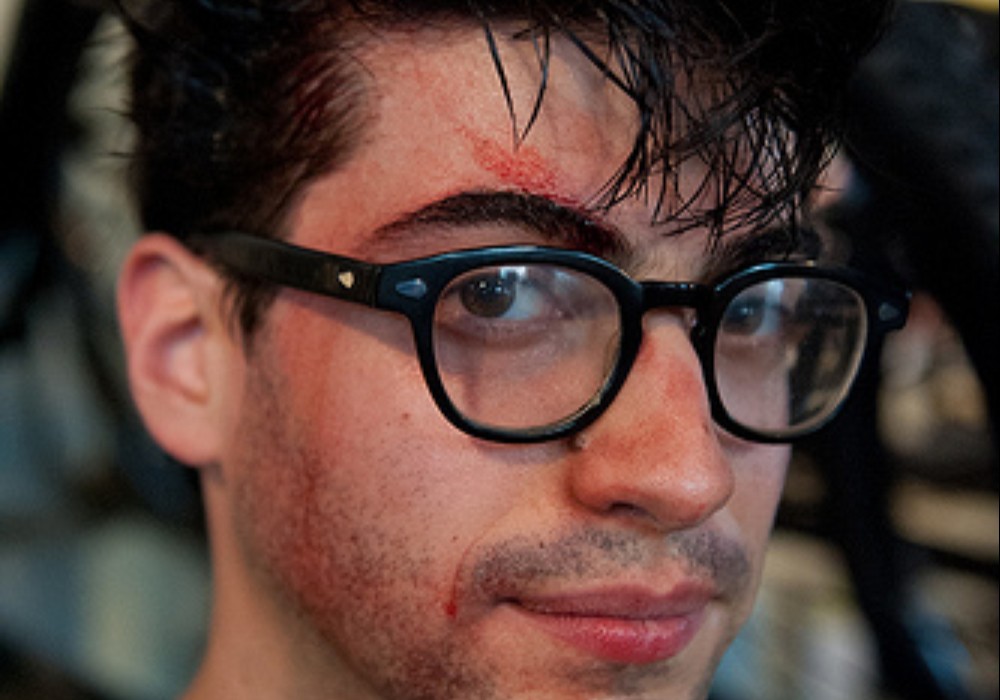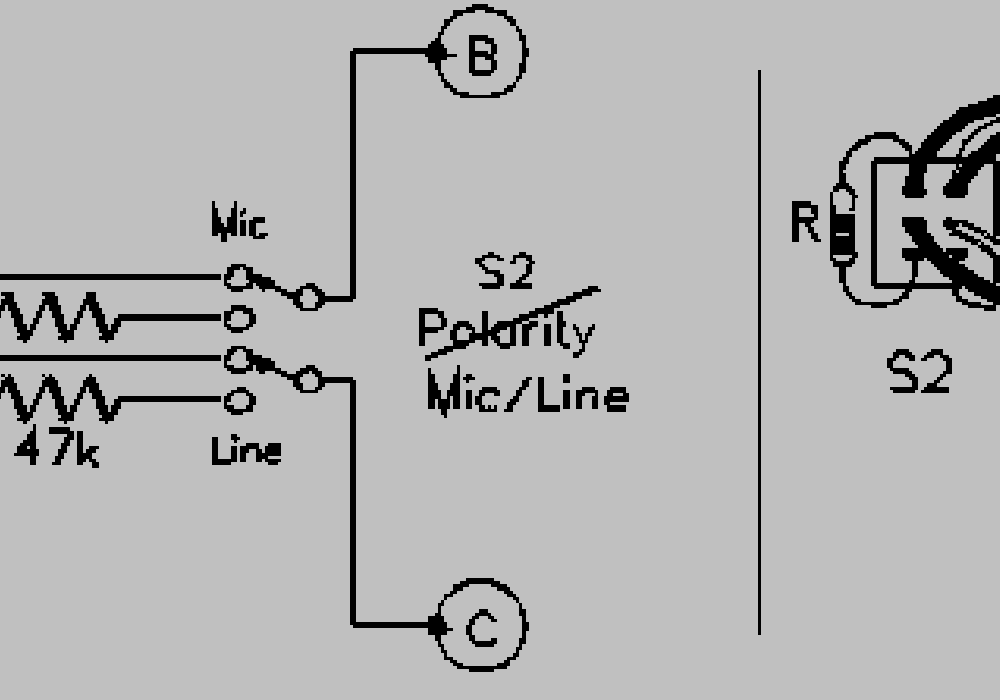He's been a member of The Three O'Clock, Jellyfish and The Grays. His voice and instrumentation appear on albums by Beck, Susanna Hoffs, Eric Matthews, Aimee Mann, and Air. He co-wrote, produced, and performed on many of the songs on Brendan Benson's two CDs. And he has five solo albums, one of which is a children's record of Beatles' instrumentals, Bedtime With The Beatles. In the fourteen years that he's been performing with major-label acts, he's worked with noted producer/engineers like Albhy Galuten (The Bee Gees, Eric Clapton, The Eagles, Dionne Warwick); Jack Joseph Puig (The Black Crowes, Sheryl Crow, Counting Crows, Belly, Clutch, Green Day, Chris Isaak, L7, No Doubt, Lisa Loeb); and Nigel Godrich (Beck, Radiohead, Ride, Travis, Pavement). But he's never strayed far from a DIY approach. He's recently taken on the challenge of producing the upcoming Lilys record in his own project studio, and he's currently recording his sixth solo album.
I met Jason Falkner a few years ago, while attending his show at Vynyl in Hollywood. Jason was hanging out with friends in the audience. As we made eye contact, Jason called out to me, "Hey, you're that guy in Tape Op!" So when I was in L.A. for the NAMM conference with fellow Tape Op'ers Larry Crane and John Baccigaluppi, I thought it'd be fun to drop by Jason's studio and talk to him about recording and producing — both at home and in big studios.
Afterwards, Jason went out for dinner and drinks with us, with the conversation proving that Jason is a walking music encyclopaedia. He really knows his pop music history. It's clear why his well-developed music sensibility comes across so well in his recordings.
LC: This place is beautiful with all the wood and glass. Do you record anyone else here... or just yourself?
I've been doing the Lilys here. I'll play you something. This song doesn't have vocals yet. It sounds kind of experimental, synth damage. [Jason rolls tape]
LC: The drums sound great. Is that all natural "room"?
Yeah. The drums were right here. Just this room.
AH: How many mics did you use on the drums?
Five or six mics. I have kind of a weird drum mic vibe. I use the same two mics for toms and cymbals. I place the mics carefully so that I get a good mix of all the toms and cymbals just from the two mics. I also mic top and bottom snare, kick, and maybe one mono overhead.
LC: Do you always record in analog?
The Lilys I did to tape. My own stuff I'm doing in Pro Tools. I just bought it [Digi001]. I still haven't figured out how to come out of Pro Tools and go through one of these outboard boxes. I'm sure it's easy. But I haven't gotten that far yet. But I love it.
AH: Are you working on a new album, playing all the instruments yourself?
Yeah. I'll play you a rough mix. [Jason hits play in Pro Tools. We listen for a bit. We are all extremely impressed.]
AH: Having heard some of your previous pop productions, and listening carefully to what we're hearing now, as I look at your screen now, I'm surprised at the incredibly low edit- density and the low track-density. But everything sounds so big and full — especially the guitars. Any tricks you'd like to share on how you get that wide, open guitar sound?
I wouldn't know how to explain. I'm so instinctual. My main politic when it comes to recording is to try to get it to sound as good as possible just from the source, and not do much fucking with it once I've recorded the sound. There's a lot of subtle and not so subtle compression going on before it goes into Pro Tools, mainly through all this gnarly '70s gear.
AH: What's a typical chain that you use?
For guitar amps, I start with an SM57 typically, but sometimes a RØDE, usually into this UREI 1178 compressor though an API 312 mic preamp. I usually go into this API 550A EQ; or if something really needs to be carved out, I'll go into this UREI 546, an old film mastering EQ, with very specific control. Sometimes I'll send the guitar into this old RCA solid-state compressor. The RCA also sounds great on snare.
AH: Do you do additional processing within Pro Tools?
As little as possible. Usually a stereo compressor across the whole mix. And usually I'll compress the snare a little again, and I'll definitely compress the vocals. I use the plug-ins more for reverbs, delays, and automated effects.
AH: How do you envision the whole mix as you're recording the song? Obviously, you can't just look over at the band and say, "Let's do a take and go for this kind of vibe," if you're playing all the instruments yourself. In other words, how do you know how everything's going to sound together when you're laying down individual instruments, one at a time?
Again, it's just instinct. I've got a finished sonic picture in my head pretty much before I start. And obviously, that changes a bit with each instrument I put down. And it steers itself somewhat. It's totally a producer thing. I'll kind of make a conscious decision on the direction I want the song to go. My ability to envision a picture so easily comes from listening to a lot of music. My record collection is so vast — from Ravel to Sex Pistols — and I enjoy elements of everything between those two. I guess that's my style, incorporating aspects of all that stuff. But in terms of strategy, I decide first what...
